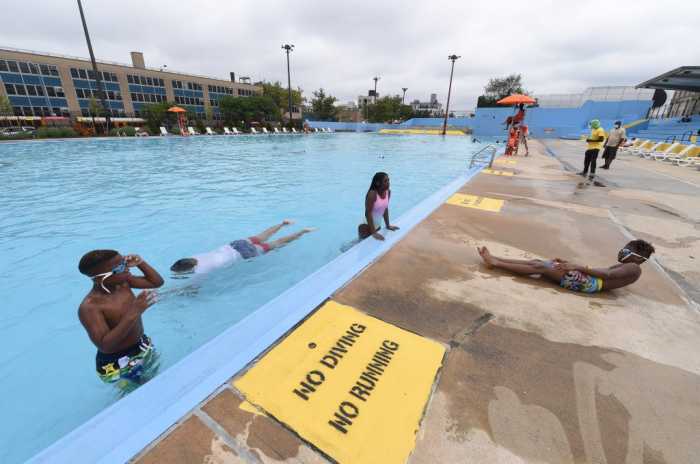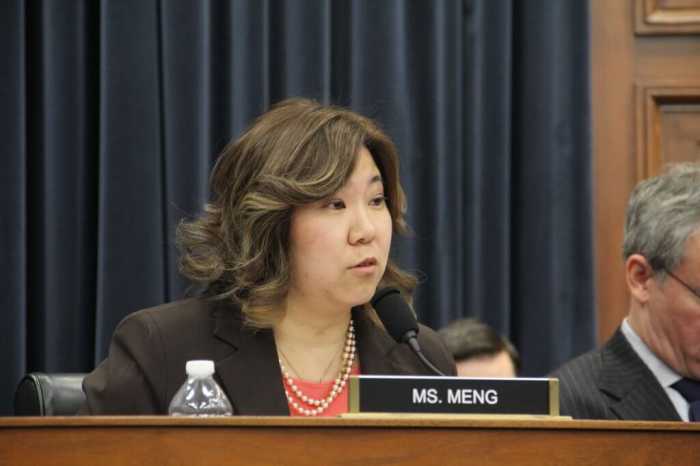Hochul announces pay increases for state lifeguards

Governor Kathy Hochul yesterday directed a pay increase for state lifeguards to help address a staffing shortage at New York State Park beaches and pools and Department of Environmental Conservation campgrounds and day use areas beaches.
Starting pay rates for lifeguards at upstate facilities will increase 34 percent, from $14.95 per hour to $20 per hour, and 21 percent for lifeguards at downstate facilities, from $18.15 per hour to $22 per hour.
“All New Yorkers deserve the opportunity to safely enjoy our public beaches and pools this summer,” Hochul said. “With a lifeguard shortage threatening access to swimming facilities, we are aggressively recruiting more lifeguards to ensure safe access to outdoor recreation during the summer months.”
The new pay rates will go into effect immediately for lifeguards at swimming facilities operated by the Office of Parks, Recreation and Historic Preservation and the Department of Environmental Conservation. State Parks provides lifeguards at swimming pools and beaches at 70 parks across the state. DEC operates 17 beaches with more than 40 lifeguards. This will also include lifeguards employed by SUNY and CUNY.
Pay rates will also increase for lifeguards with more than two seasons of experience, ranging from five percent to 30 percent, depending on location and experience.
Lander Releases New York City Claims Report for FY 2021

New York City Comptroller Brad Lander yesterday released the Annual Claims Report for Fiscal Year (FY) 2021.
The Claims Report includes detailed breakdowns of personal injury and property damage claims, including motor vehicle, civil rights, and police action claims, as well as non-tort claims, such as contract claims and special education claims, filed against the City with settlement costs paid by the City in the covered fiscal year.
In FY 2021, 10,618 claims and lawsuits against New York City were resolved for $933.7 million, a decrease compared to 13,741 claims and lawsuits resolved for $1.03 billion in FY 2020. The five costliest areas of claim settlements in FY 2021 were motor vehicle, civil rights, police action, medical malpractice, and sidewalk claims. Together, these five claim types cost $430.9 million and accounted for 78 percent of all personal injury claim settlements.
“Our office’s Bureau of Law and Adjustment works hard every day to settle viable claims filed against the City prior to litigation, which saves both the City and the claimant the costs of litigation. Our Annual Report on Claims takes a data-driven approach to analyzing claims, settlements, and judgments so we can reduce the harm to New Yorkers and the amount the City pays out – because every dollar we spend on settling claims or judgments for harm done is one we can’t spend on services or investments that help New Yorkers. We invite City agencies, the media, civic technologists, and New Yorkers to review this report and use it as a risk management tool to spot patterns and problem areas that continue to cost the City and New Yorkers,” said Lander.
Clarke introduces Green Communications Act

U.S. Rep. Yvette D. Clarke (D-Brooklyn) yesterday introduced the Generating Resilient and Energy Efficient Network (GREEN) Communications Act, legislation that will harden our communications networks against climate change and natural disasters, while simultaneously reducing the carbon footprint of communications infrastructure.
The Senate companion of the GREEN Communications Act was introduced earlier this Congress by Senators Edward J. Markey (D-MA) and Ron Wyden (D-OR).
Scientists have projected that sea-level rise will submerge more than 4,000 miles of fiber optic cables within the next 15 years. Increasing extreme weather events due to climate change – such as hurricanes, floods and wildfires – also raise the likelihood of severe outages in our communications networks. At the same time, studies estimate that the information and communications industry produces about two percent of total global CO2 emissions, which is approximately the same as the entire aviation industry.
In order to address these overlapping issues, the GREEN Communications Act will create a new program at the National Telecommunications and Information Administration (NTIA) to fund projects that increase the resilience and energy efficiency of communications networks and infrastructure.
Not only will this protect our communications infrastructure against the impacts of climate change, it will also decrease sector-wide carbon emissions and help lower overall demand on the energy grid. In addition, this legislation will instruct the Federal Communications Commission (FCC) to establish a regulatory resiliency framework designed to minimize the number, length, and impact of future communications network outages.
“As the climate crisis worsens and communities like my beloved Brooklyn stand ceaselessly imperiled on its frontlines, we must focus our efforts on targeted, comprehensive legislation aimed at protecting the countless families at risk of its impact” said Clarke. “In the face of an ever-increasing number of climate threats like storms, wildfires, and rising sea levels, it is critical our communities remain reliably connected to the communication networks that are so indispensable during an emergency. Building resilient climate infrastructure is an essential component of overcoming this crisis, and I am proud to fight for legislation that does just that.”
Meng urges congressional leadership to protect student internet access

U.S. Rep. Grace Meng (D-NY) and U.S. Senators Edward J. Markey (D-MA) and Chris Van Hollen (D-MD) led their colleagues in a letter urging Congressional leadership to support their efforts to secure additional funding for the Emergency Connectivity Fund (ECF), a crucial program created under the American Rescue Plan that has provided more than 12.5 million students access to the Internet over the past year.
The Federal Communications Commission recently announced that the most recent round of applications for ECF funds totaled $2.8 billion, nearly double the $1.5 billion that remains available for the program. Without additional funds, the ECF will be unable to meet demand from schools and libraries that provide students with the broadband connection they need to do their schoolwork, communicate with their peers and teachers, and apply to college.
“To avoid this great disconnection and prevent the reversal of ECF’s hard-earned gains in closing the homework gap for so many rural, low-income, Black, Brown, Hispanic, Latino, Asian American, American Indian, Native Hawaiian, and Pacific Islander students and their teachers, we urge you to work with us to identify and seize opportunities to provide additional funding for the Emergency Connectivity Fund,” the lawmakers wrote in their letter. “With the new school year just a few months away, we cannot allow millions of students to lose access to high-speed broadband.”










